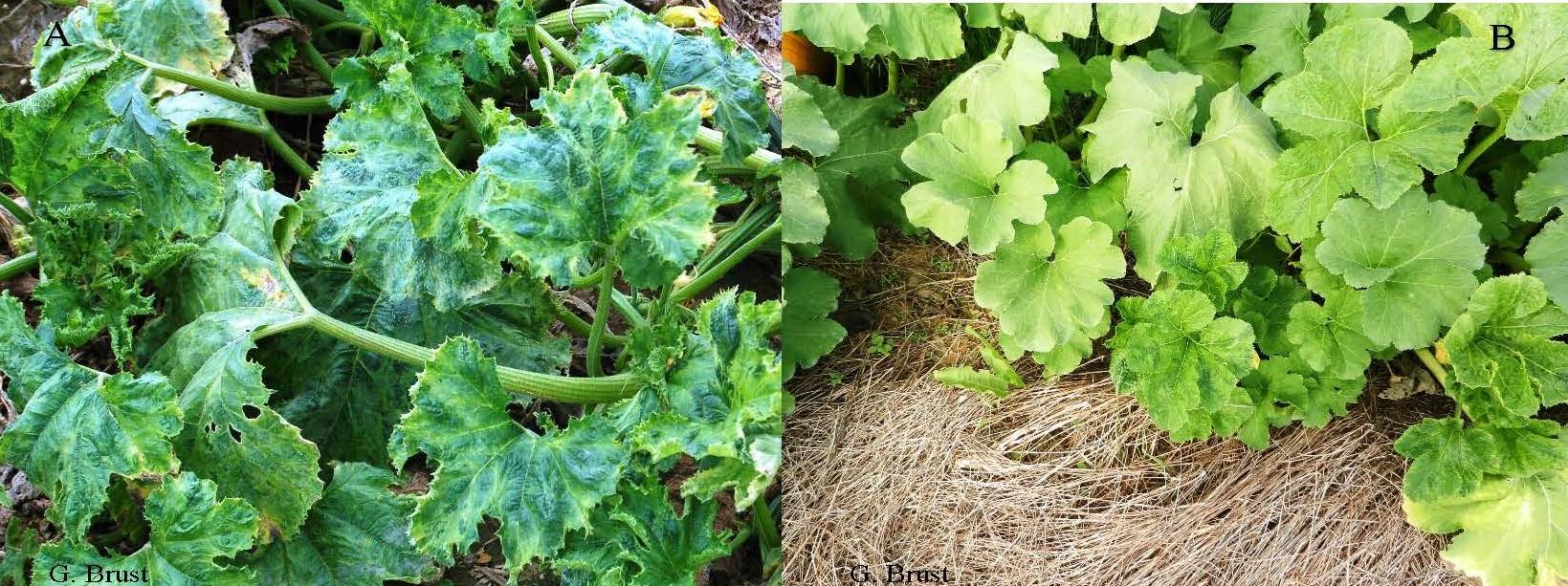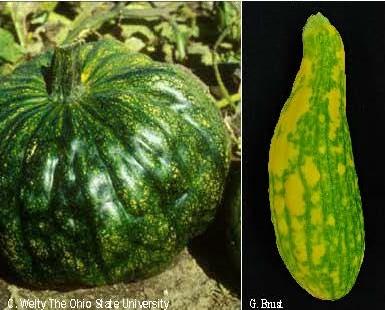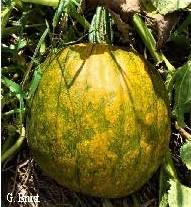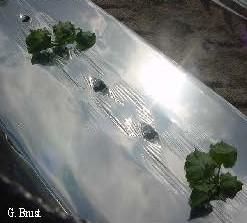On plants, viruses can either infect the plant alone or together. If a plant is infected by only one virus, the symptoms generally are milder than if by two or more. Infection by two viruses initially causes strong mosaic and distortion on leaves. Infected plants have smaller and smaller new leaves. Late stage infections include leaves that turn yellow or become scorched along the edge.
Aphid species
Out of a possible 50 species of aphids that can be found in cucurbit fields, only a few have been shown to carry and effectively transmit the mosaic viruses. The melon (Aphis gossypii) and green peach (Myzus persicae) aphids were strong vectors while the potato (Macrosiphum euphorbia) and bean (Aphis fabae) aphids were poor vectors. The corn leaf aphid is one of the most numerous in pumpkin and squash fields but does not carry the virus.
Management
Aphids transmit the virus to plants through their sucking mouthparts. Viruses that are non-persistently transmitted are difficult to manage because the aphids acquire and transmit the virus so quickly. The non-persistent (NP) acquisition or transmission of the virus is completed in a matter of seconds to 1 minute. NP viruses cannot spread very far from where they were originally acquired. Pesticides sprayed on the plant will eventually kill the aphids, but too late to stop them from transmitting the virus. Therefore, insecticides have little effect on NP virus transmission by transient, non-colonizing aphids, though insecticides can control direct damage (foliar deformation and honeydew deposits) and secondary transmission of the virus in a field. Insecticides include Fulfill, Beleaf, the neonicotinoids and some of the pyrethroids.
Resistant varieties: A limited number of resistant varieties are available for certain viruses on squash and pumpkin while cucumber has many more resistant cultivars available – see the Mid-Atlantic Commercial Vegetable Production Recommendations guide. Most of the squash cultivars with virus resistance have just intermediate resistance, which means that the plant can restrict the growth and development of the virus and show less severe symptoms compared with a susceptible plant. Some cultivars of yellow summer squash carry a "precocious yellow gene," which mask the color-breaking that is common with most cucurbit viruses.
Weeds as Alternative Hosts
Many weeds can act as reservoirs for viruses even though they show no symptoms. Aphids will often land on these weedy plants and probe the plants at which time they acquire the virus in a matter of seconds. Some of these weeds include: Shepherd's purse, Virginia pepperweed, Chicory, Canada thistle, Jerusalem artichoke, Prickly lettuce, Dandelion, Cocklebur, Endive, Escarole, Sunflower, Yellow rocket, many Wild mustards and radish, Marsh yellowcress, Pennycress, several Chickweed species, Common lambsquarter, and most Morning glory and Speedwell weeds.
Print Article
Return to Vegetable Insect IPM



